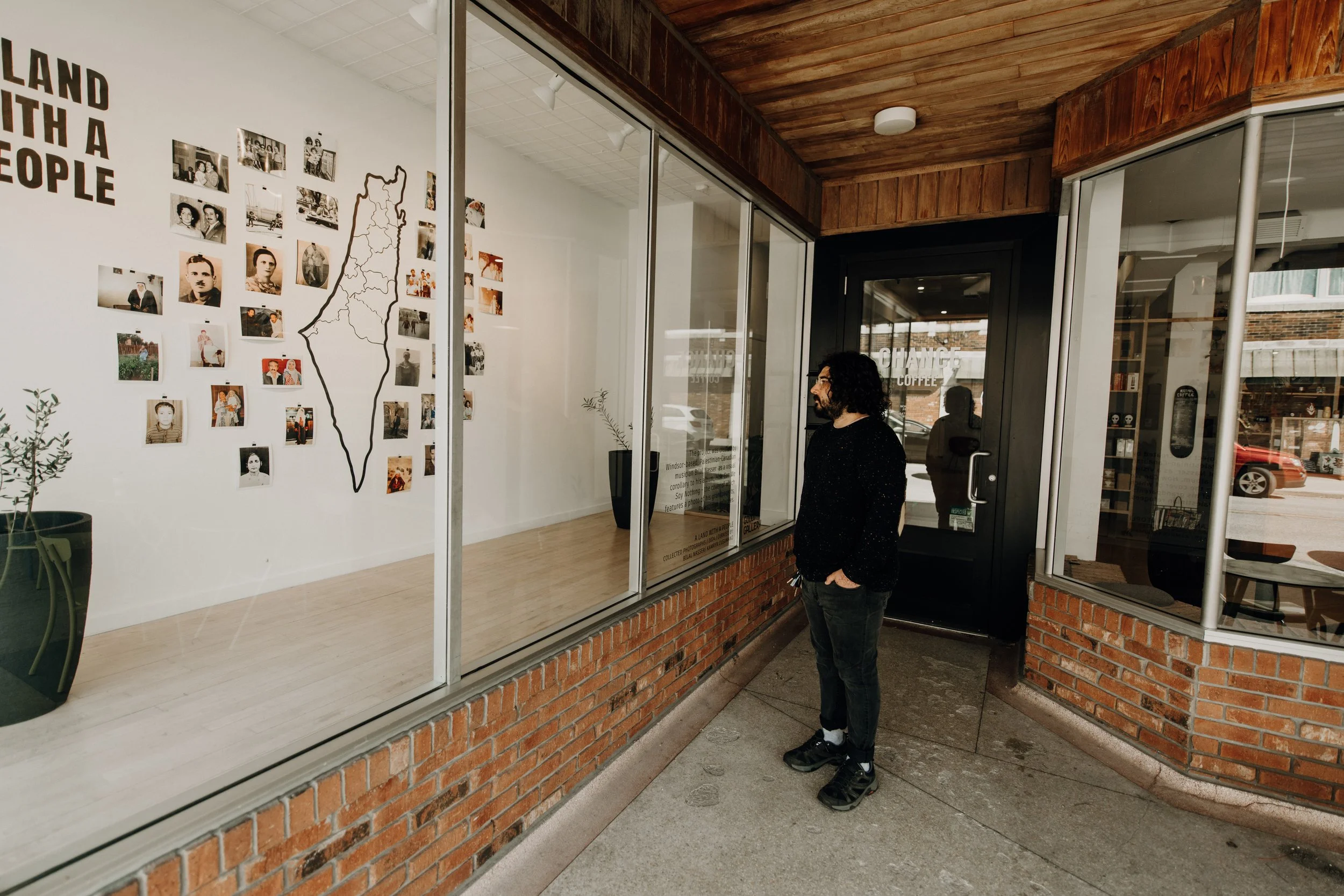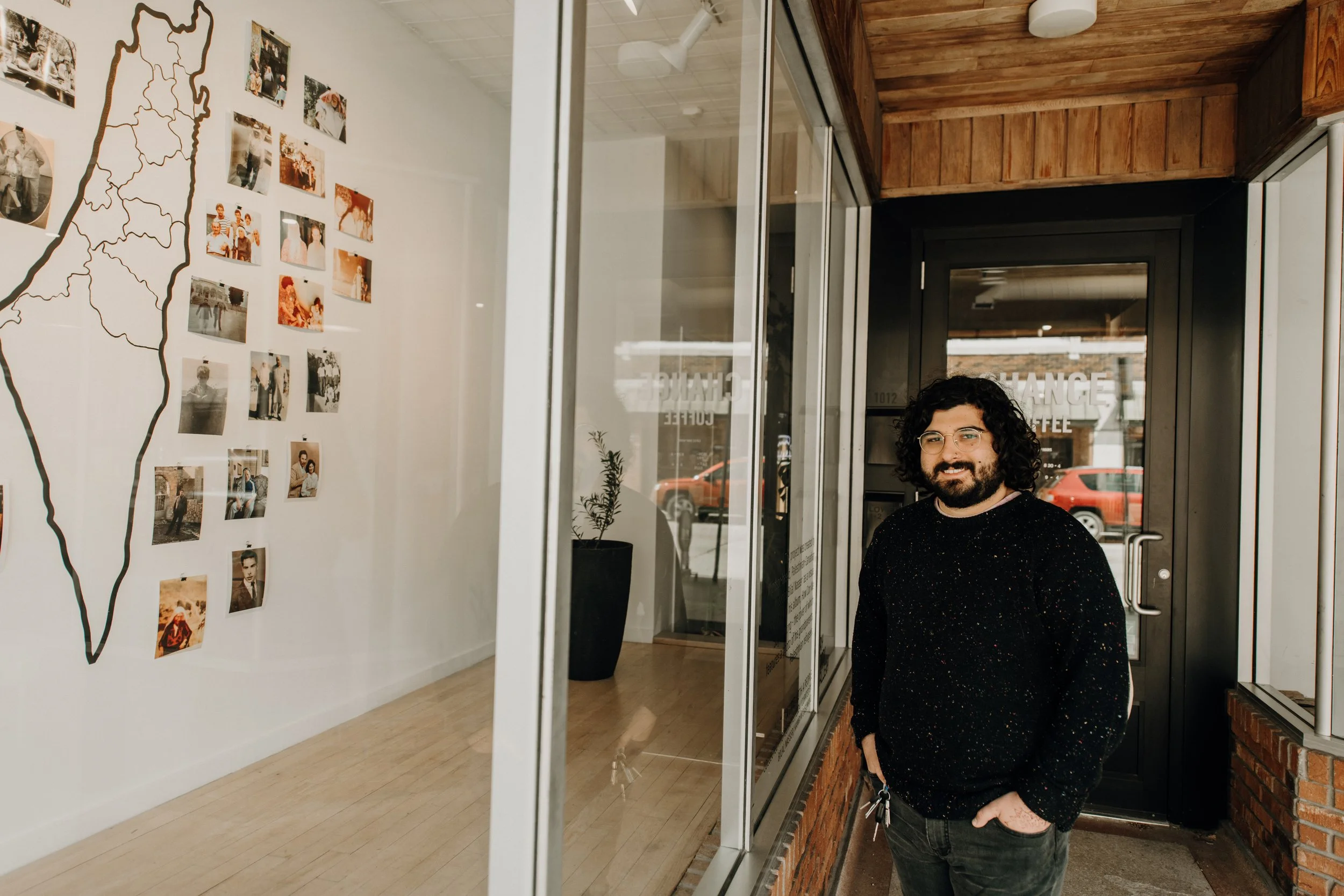A Land With a People Art Show
Bilal Nasser looking into the window of the art show A Land with a People.
A Land With A People
April 2024 - June 2024
Art show curated by Kamryn Cusumano & Bilal Nasser
Dry Goods Gallery
“A land with a people for a people without a land” is an adage portraying the land of Palestine as an empty landscape, ripe for settlement by European-Zionist settlers. For the aspiring settler-colonial project, there was one inconvenience—this land was home to an entire civilization of people. Thus the realization of the zionist dream necessitated the removal of the indigenous inhabitants of the land. The creation of the state of Israel in 1948, with a Jewish demographic majority, could not have been possible without the violent displacement of over 700,000 indigenous Palestinians, massacres of thousands, and destruction of hundreds of villages. This process did not start or end with the creation of Israel, and has only accelerated in scope since. The ongoing ethnic cleansing of Palestine is known as the Nakba, translating to the “catastrophe”. What is occurring in Gaza today is a second Nakba, of unprecedented scope.
The Land With a People Project demonstrates there were millions of people there, with families, shared histories, and a connection to their land. Part of the genocide of Palestinians has been the attempted erasure of these stories.
Palestinian-Canadians were asked to submit photos of their families and ancestors to show this was a land with life, history, and memories. The photographs displayed are of people who were ethnically cleansed from their homes through direct colonial violence and conquest, or they were compelled to leave through the administration of apartheid policies. Many of the people shown are older than the state of Israel. For many of them, their villages no longer exist.
The map shown is of a united Palestine, featuring pre-nakba districts, before the U.N. partition plan which gave the indigenous Palestinian majority population less than half of the land.
The exhibit is framed with olive trees because for many displaced Palestinians, the olive tree is a symbol of home. As Israel wages a genocide of Palestinians, they simultaneously are waging an eco-cide on the land, burning tens of thousands of olive trees across the Middle East. During this year’s genocidal war alone, Israel’s illegal use of white phosphorus bombs have burned 47,000 recorded olive trees in Lebanon, and thousands more in Palestine. Since 1967, settlers have destroyed more than 800,000. The trees are a reminder that settler colonialism is not just about occupying the people, but also the land. The occupation attempts to sever the connection between the people and their land, in an attempt to render impossible the indigenous mode of survival.
This exhibition was created by Windsor based, Palestinian-Canadian musician Bilal Nasser as a part of the release of his album, How Can We Say Nothing. Bilal’s album cover is a photo of his grandparents, who were both Palestinian refugees.




